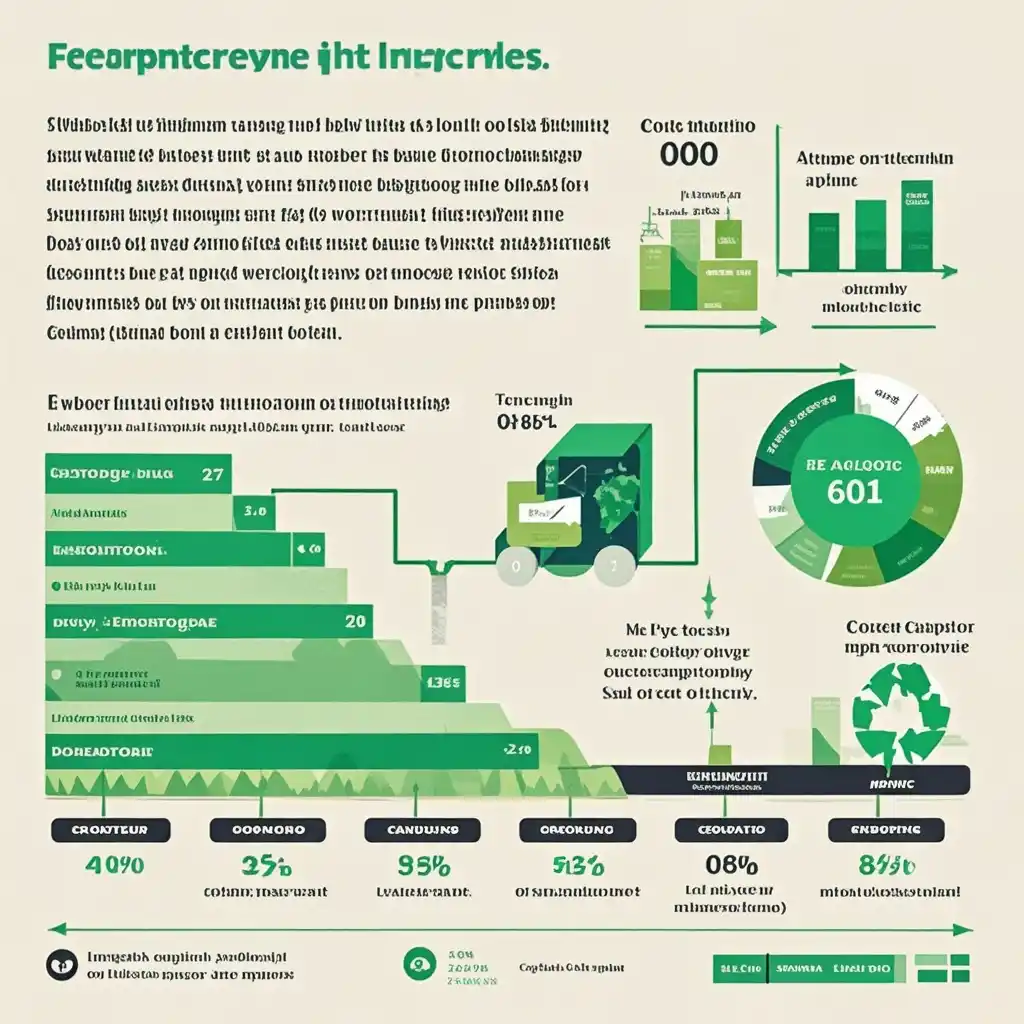Navigating Tariffs: How Cross-border E-commerce Enterprises Can Cut Environmental Impact
Background
In the world of cross - border e - commerce, tariffs play a significant role. Tariffs often lead to the elongation of supply chains as companies seek more cost - effective ways to source and distribute their products. For example, a study showed that when tariffs are imposed, around 30% of cross - border e - commerce enterprises tend to look for alternative suppliers in different regions. This search for alternatives can increase the length of the supply chain by an average of 1.5 times.
A longer supply chain means more transportation, warehousing, and handling of goods. And these activities are major contributors to carbon emissions. Transportation, especially long - distance shipping by sea or air, is a significant source of greenhouse gas emissions. It is estimated that the shipping industry alone accounts for about 2 - 3% of global carbon dioxide emissions. When supply chains are extended due to tariffs, this percentage can potentially increase for cross - border e - commerce operations.
Environmental Impact
The environmental impact of the extended supply chains in cross - border e - commerce under tariffs is multi - faceted.
**Carbon Emissions from Transportation**
As mentioned above, the increased distance in the supply chain leads to more fuel consumption. Air freight, which is often used for high - value and time - sensitive products in cross - border e - commerce, has a relatively high carbon footprint. For every kilogram of cargo transported by air, it can emit up to 5 - 10 times more carbon dioxide compared to sea freight. And with supply chains stretching further, the reliance on air freight may increase in some cases to meet delivery deadlines, thus significantly contributing to the overall carbon emissions of the e - commerce operations.
**Warehousing and Packaging**
Longer supply chains also mean more warehousing stops. Warehouses require energy for lighting, heating, and cooling. In addition, goods may be repackaged multiple times during transit between different warehouses and distribution centers. The packaging materials, such as plastics and cardboard, also have an environmental impact. It is estimated that in the cross - border e - commerce industry, packaging waste can amount to millions of tons annually, and a significant portion of this can be attributed to the inefficiencies caused by extended supply chains due to tariffs.
Strategies for Cross - border E - commerce Enterprises to Cut Environmental Impact
**Optimize Supply Chain Management**
Cross - border e - commerce enterprises can use data analytics to optimize their supply chains. By analyzing factors such as demand patterns, shipping costs, and carbon emissions associated with different transportation routes, they can make more informed decisions. For instance, some companies have been able to reduce their carbon emissions by up to 20% by switching to more efficient shipping routes and consolidating shipments. This not only reduces costs but also has a positive environmental impact.
**Sustainable Packaging Solutions**
Investing in sustainable packaging is another crucial strategy. Using biodegradable or recyclable materials can significantly reduce the environmental impact of packaging waste. Some forward - thinking e - commerce companies have reported a reduction in packaging - related environmental impact by over 30% after switching to sustainable packaging materials. Additionally, optimizing packaging design to reduce its volume can also lead to less space - consuming shipments, which in turn can reduce transportation - related emissions.
**Local Sourcing and Production**
In some cases, cross - border e - commerce enterprises can explore local sourcing and production options. By sourcing products closer to the target market, the supply chain can be shortened. For example, if a European - based e - commerce company sources some of its products from local manufacturers in Europe instead of from Asia, it can reduce the transportation distance significantly. This can lead to a substantial reduction in carbon emissions, potentially up to 50% or more depending on the product and the scale of the operation.
Summary
Tariffs in cross - border e - commerce can have a significant environmental impact due to the elongation of supply chains. The resulting increase in carbon emissions from transportation, as well as the environmental issues related to warehousing and packaging, cannot be ignored. However, cross - border e - commerce enterprises have several strategies at their disposal to mitigate these impacts. By optimizing supply chain management, adopting sustainable packaging solutions, and exploring local sourcing and production options, these enterprises can not only reduce their environmental footprint but also potentially gain cost - savings and improve their overall competitiveness in the market. It is essential for cross - border e - commerce enterprises to be aware of these environmental challenges and take proactive steps towards more sustainable operations in the face of tariff - related supply chain changes.



